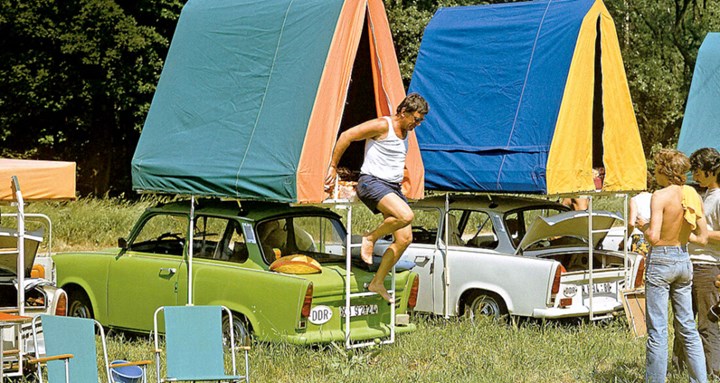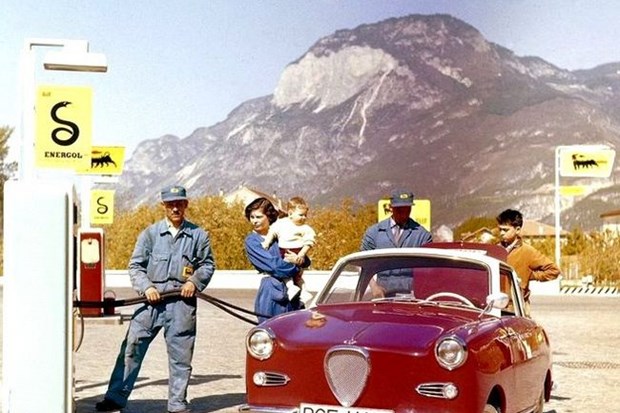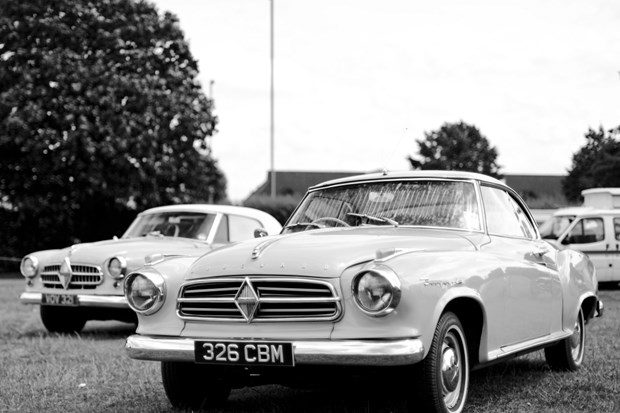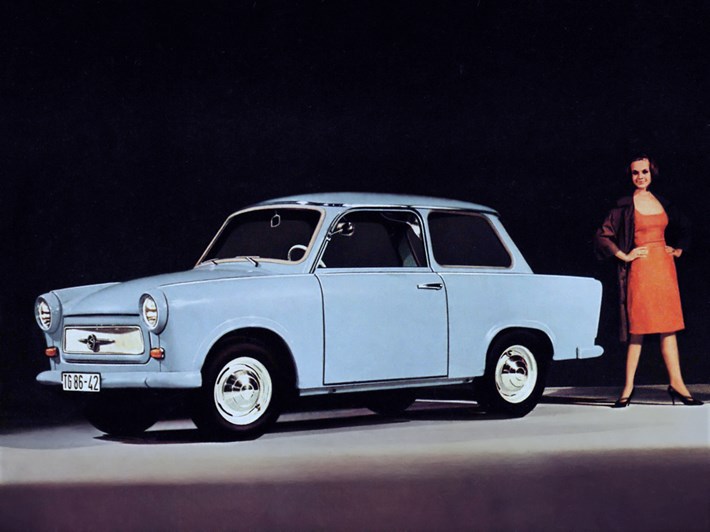
The Trabant was the people's car designed by the communist government of the GDR after the Second World War. Technically simplistic and highly polluting, it did not survive German reunification in 1989.
In the GDR, Sachsenring Automobilwerk Zwickau was a state-owned enterprise (VEB for "Volkseigener Betrieb" or "People's Factory"), consisting of the former Auto-Union factories, which had been transferred to Soviet territory after the Second World War. At that time, the country was characterised by heavy industry and a gloomy life.
As far as cars were concerned, the East Germans were not really spoilt for choice: after the war, only IFAs, former DKWs rebadged, went on sale from 1949. In 1958 the Trabant (meaning 'satellite' in German) was launched, the first real new car since the end of the war. This small family car was equipped with a robust and simple 2-stroke twin-cylinder engine. Sold under the name P50, it evolved in 1962 into the P60 and now reached 100 km/h. The brand made history with a new model that arrived two years later.
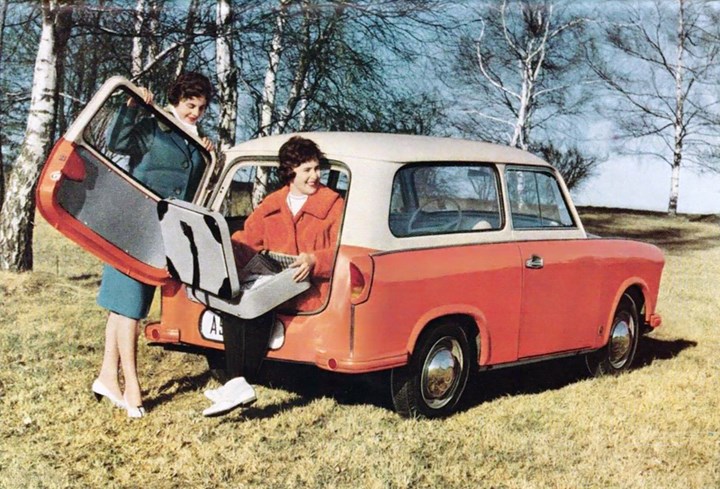
Duroplast
The latest model, the 601, had a much more modern square design and adopted some of the styling cues of the early 1960s, such as vertical tail lights. However, it was only a rejuvenated version of the P60 and still used a body made of a composite material that was the pride of the GDR: Duroplast.
Made from hot-pressed recycling rags, it was surprisingly robust, except in the event of a crash! Under the bonnet of the Trabant was still a 954 cc air-cooled twin-cylinder. Designed to be repairable by most people, this car was brilliantly simple, just like a 2CV or a Beetle. Unfortunately, consumer goods were not easily accessible in the GDR. This was the case with the Trabant, whose delivery time can be as long as 10 to 20 years if you don't have a pass, and of course you didn't have a choice of colour!

For all uses
While the Wartburgs were mainly reserved for an elite close to the Communist Party, the Trabant was the only model devoted to the people. During its career, it was also available as an estate (Universal), a convertible (Tramp) or a van. However, the years passed and the Trabant did not evolve.
The final blow came in 1989 with the fall of the Berlin Wall. The company then tried to modernise the car by installing a Volkswagen 1.1 engine in place of the two-stroke block. Technically outdated, dangerous in the event of an accident and totally obsolete, the Trabant survived for another year before disappearing for good.
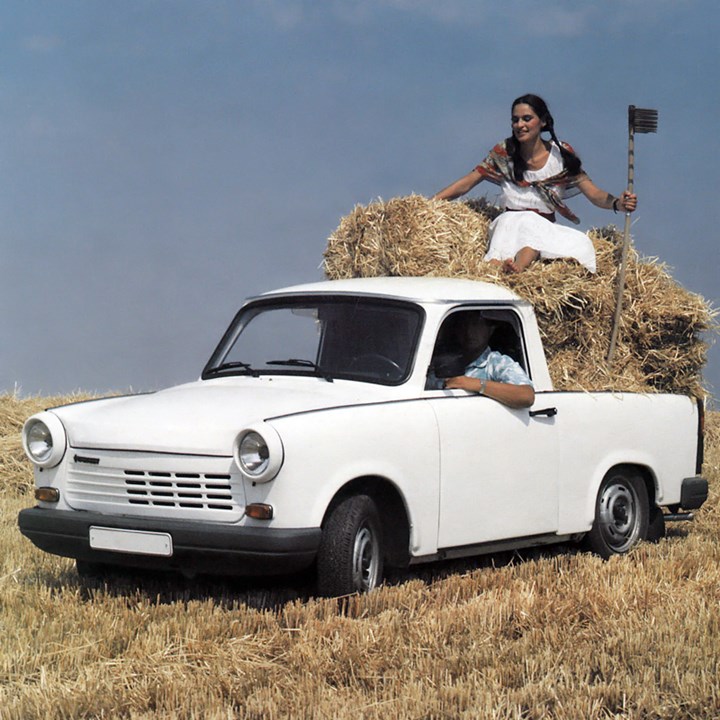
Ostalgia
For some years, the Trabant was ignored, and many were destroyed because it symbolised the former communist regime that had caused so much suffering to so many people. However, ostalgie, the nostalgia of the East, was born with the new generations, those who did not know the GDR but who are attracted by the aesthetics of that period.
The Trabant has become a cult car and is now sought after by young enthusiasts. Today, you can expect to pay between 3,000 and 5,000 euros for a car in good condition. All spare parts are remanufactured and the best thing is to find period accessories to personalise your car to the maximum!
